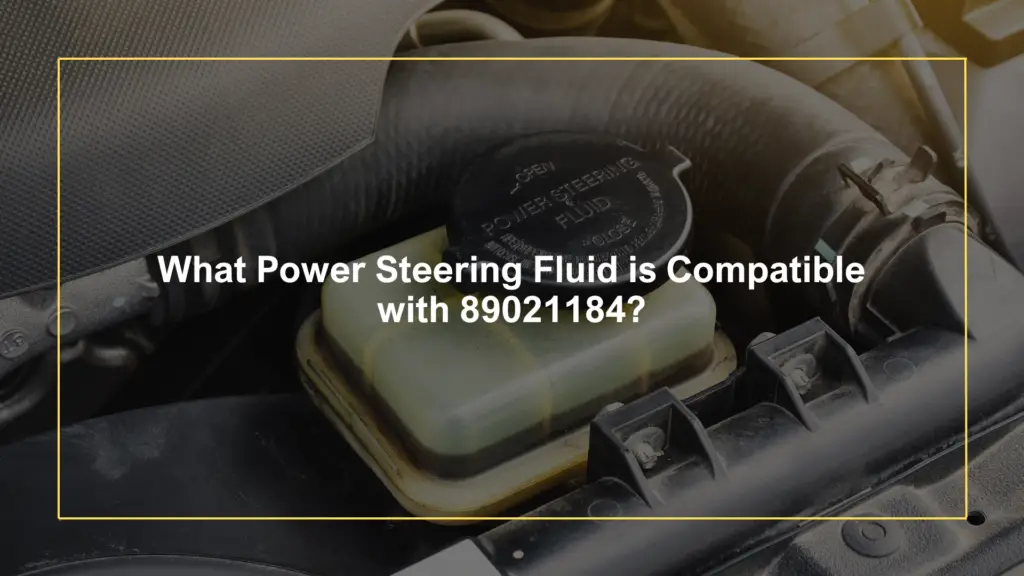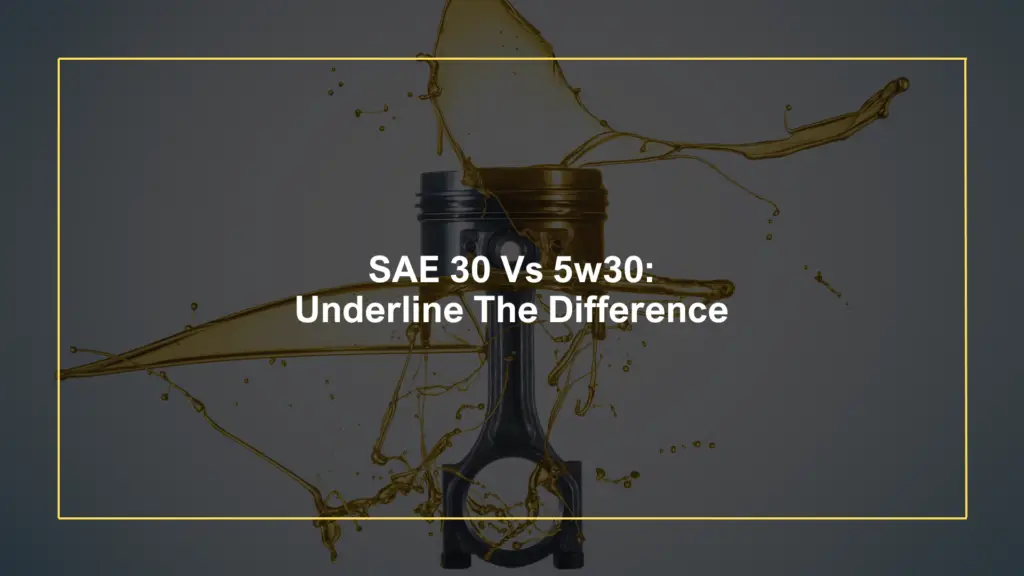A proper brake fluid change is important to keep your BMW braking system operational. Failure to change your brake fluid will impair the system’s effectiveness, putting lives at risk.
However, you might wonder how much does it cost to change the brake fluid for your BMW?
In this article, I’ll go over everything about the changing cost of BMW brake fluids. You can compare the price when you do it yourself, at the BMW dealerships, and other service shops.
Let’s find out!
BMW Brake Fluid Change Cost
The cost of a change can differ considerably depending on where you get the job done. You can get your BMW brake fluid changed by yourself, at a BMW dealership, or a car repair shop.
At BMW Dealerships
The cost of changing the brake fluid in your BMW at a dealership is roughly $200. Although dealership servicing is more expensive than auto technicians, it may be the most secure option for vehicle maintenance. If your vehicle is still under warranty, it’s recommended to contact the BMW dealership to verify if the brake fluid change service is covered.
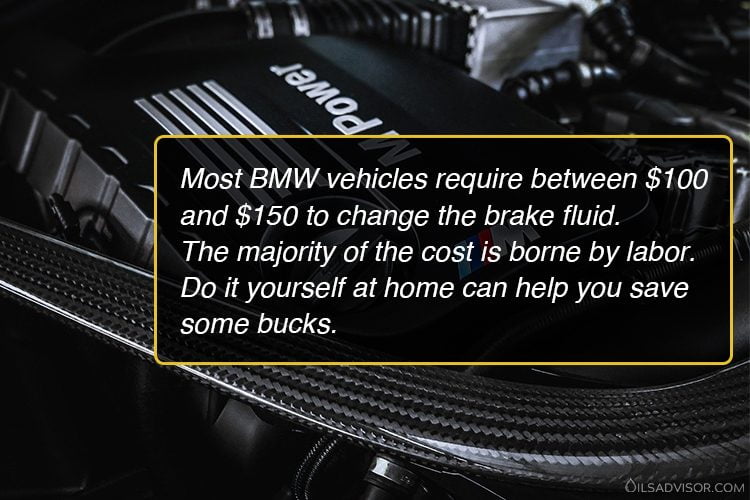
At Service Shops
Most BMW vehicles require between $70 and $150 to service the brake fluid. Most of the cost is borne by labor, while the braking fluid itself is inexpensive. On the other hand, most vehicle repair shops will provide you with a comprehensive brake service or a brake fluid flush. Let’s see what they will do:
- Remove the old brake fluid.
- Replace the brake fluid.
- Bleed the brakes.
- Clean up any spilled brake fluid from the bleeding operation.
- Examine for fluid leaks.
- Check the brake pads, rotors, and hoses.
- Test drive the vehicle.
Factors affect Brake Fluid Service Cost
- Your location
The cost of changing your brake fluid will be different from where you live. For instance, changing the fluid in Los Angeles will cost you more than in Phoenix.
- Your BMW Model & Year Make
I know you already know this. I will take the BMW 321i as an example. A brake fluid change for the 2011 BMW 328i will be more expensive than the same model manufactured in 2007.
- The Service Shops
The difference in price between auto repair shops depends on the labor cost, customer satisfaction, facilities, warranty,… Let’s see the price at some shops when you want to change your brake fluid for your BMW.
Brake Fluid Flush Cost Comparison At some Service Shops
| Price ($) | Warranty | |
| Your Mechanic | 79-89 | 12 months |
| Midas | 75-94 | 12 months |
| Mr. Tire | 80-95 | 12 months |
| Pep Boys | 70-85 | 6 months |
| Jiffy Lube | 65-85 | 12 months |
| Brake Master | 90-120 | 12 months |
Do It Yourself
Changing your car’s braking fluid isn’t difficult, but it does take a little practice. Fluid is inexpensive, and all it takes is a little time and effort. Simply choose/order the correct bottle for your BMW and replace it effortlessly at home.
DIY is a good option if you want to save money. If you’ve got the right expertise, you can change the fluid easily at your garage. However, if you are not mechanical-savvy or if your BMW has severe problems, I recommend that you let the professionals do the work.
Related: BMW X5 Oil Type & Oil Capacity
About BMW Brake Fluid
BMW Brake Fluid Specs
Normal or low viscosity
- Low viscosity fluid is used on any BMW model equipped with DSC (Dynamic Stability Control), which is nearly all BMWs from 2003
- Any cars used on the racetrack or without DSC use the thicker Normal Viscosity fluid.
DOT4, DOT5, or DOT5.1
According to most BMW owner’s manuals, brake fluid used for their vehicle should be DOT 4, DOT 5, or DOT 5.1.
The DOT ratings refer to the dry and wet boiling temperatures of the fluid. Wet is fluid that has absorbed moisture after one year, and dry is fresh from the bottle. A higher DOT rating is given to boiling points that are greater.
DOT 5 is connected with silicone-based fluid, whereas DOT 5.1 is designated for Low Viscosity glycol-based fluid. “DOT 4/5” or “Super DOT 4” refers to a fluid of Standard Viscosity that reaches the DOT 5 boiling point.
Choose DOT 5 if you enjoy racing or have recently purchased one of the M sport BMW models. It’s made of silicone, which has a very high boiling point and keeps your brakes from overheating even while you’re pushing your car to the maximum limit on the track.
Recommended Brake Fluid for BMW
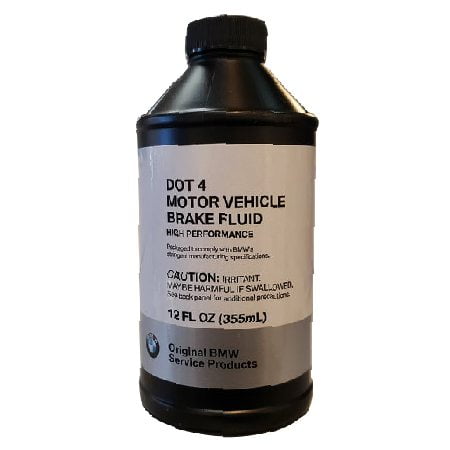
Genuine BMW DOT 4
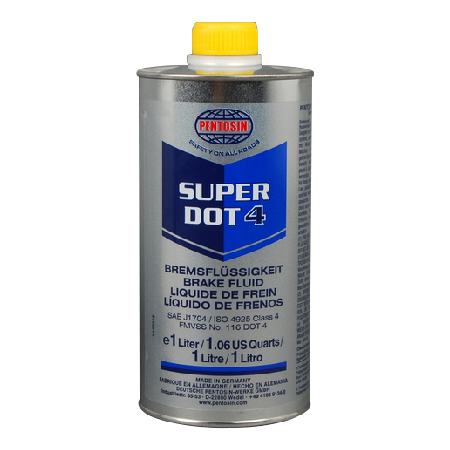
Pentosin Super Dot 4

Motul MTL RBF 600 Dot 4
Related: List of Motor Oils That Can Meet LL-01
How to Change BMW Brake Fluid
Preparation
You’ll need an assistant to assist you throughout the procedure and some tools:
- New brake fluid
- Turkey baster
- Empty container
- Glove
- Jack stand
Step-by-step Guide
Step 1
To begin, ensure that your vehicle is parked on a level area and that the engine is turned off. Jack up the car and remove all of its wheels.
Step 2
Open the car hood and look for the BMW brake fluid reservoir location. Using a turkey baster, open the lip and drain the old fluid from the reservoir. Place the old fluid in an appropriate container for disposal.
Step 3
After that, fill the master cylinder reservoir up to the fill line with new fluid and reinstall the lid. Make sure that you are using the proper fluid specification for your BMW.
Always keep in mind that when you push the brake pedal, fluid will spurt out of an open reservoir. So, before you press the brake pedal, make sure to reinstall the reservoir cap.
Step 5
The next step is to find the vehicle’s bleed valves. On the backside of each brake caliper is a bleed nipple. Apply lubricants to them to aid in their loosening. Start with the rear wheel furthest away from the brake fluid reservoir.
You’ll need the empty container for collecting the old brake fluids in this step. Connect one end of a hose to the bleed nipple, and then place the other end of the hose in the container that will hold the old master cylinder brake fluid.
Step 6
Ascertain that your assistant is in the vehicle. Ask him/her to softly depress the brake pedal while you open the bleed nipple, allowing the old fluid and any bubbles to escape into the container. Close the bleed nipple and request that your aide slowly press the pedal again while you open the nipple. Then close the nipple once more. Continue this process until you observe the new fluid pouring out without any bubbles.
Step 7
Repeat this process for each wheel, coming closer to the master cylinder each time. After each bleeding, inspect the brake fluid reservoir. Refill with new fluid to the fill line if necessary.
Step 8
Ask your aide to press the brake pedal once more while you inspect all of the bleed points, hose connections, and master cylinder for leaks. Check the master cylinder level, add as needed, and replace the cap.
Step 9
Replace the wheel and gently lower the vehicle to the ground. Take your car for a spin.
Conclusion
Changing your brake fluid is a necessary element of car maintenance. It ensures not only the best performance of your BMW but also guarantees your safety. Spending some money on its upkeep is insignificant in comparison to what you stand to gain.
Do explore any of the alternatives presented above. Your vehicle will always receive the best care. Better yet, if you’re up to it, you can enlist the help of a friend and do it yourself. Regardless of which solution you choose, make sure to keep your brake system in good working order.
Related Reads
- Transmission Fluid Change Cost Learn about the costs associated with changing transmission fluid to get a better understanding of maintenance expenses, including brake fluid changes – Learn more.
- John Deere Hy-Gard J20C And J20D Equivalent Explore maintenance costs and fluid equivalents for other high-performance machinery to compare with BMW brake fluid change costs – Find out more.
- Coolant Boiling In Reservoir: Causes & Solutions Understand how maintaining proper fluid levels, including brake fluid, can prevent issues like coolant boiling and ensure vehicle reliability – Explore here.
- All You Need To Know About Differential Fluid Change Get insights into the costs and benefits of changing differential fluid to better manage your overall vehicle maintenance budget, including brake fluid changes – Discover now.
